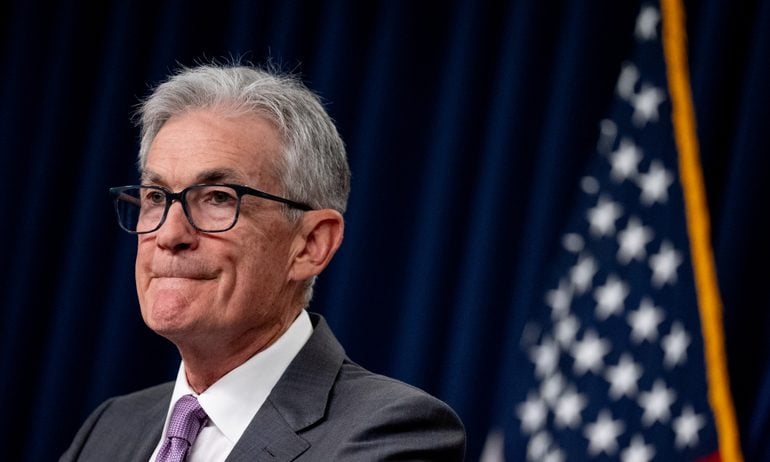As Markets Tumble, Fed Pressured to Consider Emergency Rate Cut
The Federal Reserve only makes emergency rate cuts during moments of economic crisis, like the coronavirus pandemic or the 2008 housing collapse.

Many, or all, of the products featured on this page are from our advertising partners who compensate us when you take certain actions on our website or click to take an action on their website. However, this does not influence our evaluations. Our opinions are our own. Here is a list of our partners and here's how we make money.
Speculation is now mounting that the Fed — which opted not to lower rates at its July meeting despite slowing inflation — might not wait until its September meeting to make its next move.
While the Fed rarely takes emergency action, some are calling on the central bank to do so in the face of economic uncertainty and renewed fears of a looming recession. The stock market plummeted and the bond market tumbled on Monday. The decline was largely in response to international market plunges and Friday’s jobs report that showed a slowdown in job growth. Unemployment rose to 4.3% in July — its highest level since October 2021.
Today some traders, economists and commentators are calling on the Fed to make an emergency rate cut. The fear is that the Fed has waited too long to take action to lower rates.
An emergency rate cut is an unscheduled action the Federal Reserve takes to reduce the federal funds rate in between scheduled meetings of the Federal Open Market Committee (FOMC). It only happens when there’s a significant economic crisis at hand.
Jeremy Siegal, a prominent economist and professor emeritus of finance at the University of Pennsylvania Wharton School of Business, called on the Fed to make a 75-basis-point emergency cut in the next week and an additional federal funds rate cut at its Sept.17-18 meeting . As of today, traders are projecting a 60% chance of an emergency 25-basis-point rate cut in the next week, Bloomberg reports.
During a CNBC appearance today, Austan Goolsbee, Federal Reserve Bank of Chicago president, declined to answer when asked if the Fed would make an emergency rate cut.
The Fed’s actions on rates — cut, pause or raise — impact banks, markets and consumer products such as credit cards, mortgages, auto loans and student loans.
Even if the Fed doesn’t make an emergency rate cut, it’s near certain that the FOMC will do so at its upcoming meeting. The futures market’s CME FedWatch Tool currently pegs the likelihood of a September rate cut at 100%. It also shows a strong odds — about 80% — that the Fed will make a 50-basis-point cut.
If the Fed cuts rates by 50 basis points in September, or sooner, it would be the largest decrease since the Fed lowered rates at the start of the coronavirus pandemic.
The Fed makes emergency cuts when need arises
There’s precedent for the Fed to take emergency action — it has done so seven times. The most recent was on March 3, 2020 when the market dropped due to panic in the economy due to the rapid onset of the coronavirus pandemic. At the time, the Fed cut the funds rate by 50 basis points, which put rates at 1% to 1.25%. Then at the Fed’s scheduled meeting in March 14-15, 2020, it cut rates again to 0% to 0.25%.
There were three emergency rate cuts during 2001, largely in response to the tech bubble burst, as well as the Sept. 11 terrorist attacks. During the 2008 financial crisis, the Fed made two emergency cuts in January and October of that year. The Great Recession resulted in historically low rates that lasted for several years.
The Fed has made just one emergency hike: In April 1994, the Fed increased rates from 3.50% to 3.75% in response to a rise in inflation.
The Fed’s April 1994 emergency rate hike was the most aggressive upward move it would make until June 2022, when inflation spiked to a 40-year high and the Fed raised rates by 0.75%. It then raised rates at its subsequent July 2022, Sept. 2022 and Nov. 2022 meetings. The Fed continued raising rates until July 26, 2023, when it set the rates to 5.25% to 5.50%. The rate has remained unchanged since then.
(Photo by Andrew Harnik/Getty Images News via Getty Images)





